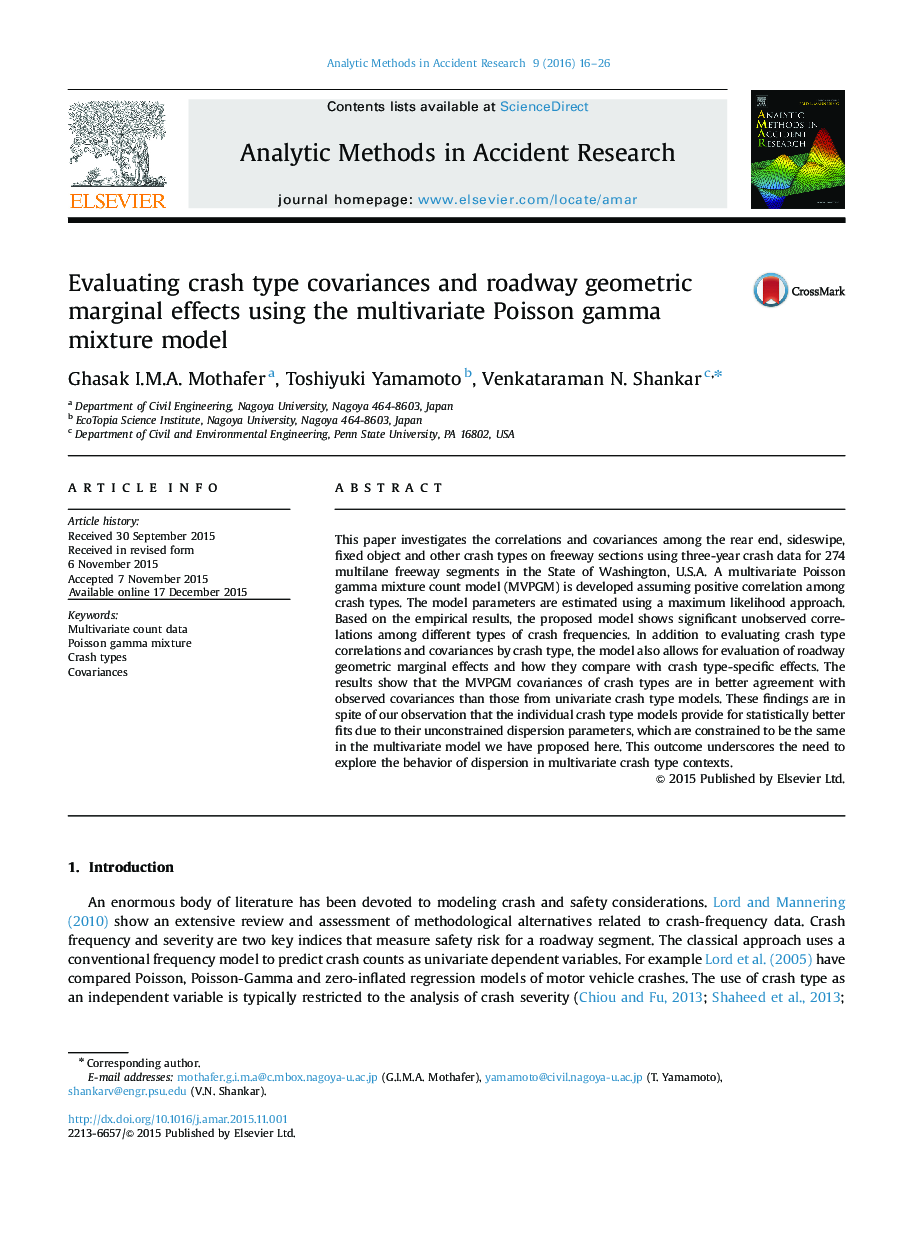| Article ID | Journal | Published Year | Pages | File Type |
|---|---|---|---|---|
| 1104529 | Analytic Methods in Accident Research | 2016 | 11 Pages |
•Article considers a joint model of crash type on interstates.•Provides insight into crash type covariances.•Provides insights into the nature of marginal effects of a total crash model decomposed by crash type.•Shows that joint modeling captures covariances in alignment with observed covariances.
This paper investigates the correlations and covariances among the rear end, sideswipe, fixed object and other crash types on freeway sections using three-year crash data for 274 multilane freeway segments in the State of Washington, U.S.A. A multivariate Poisson gamma mixture count model (MVPGM) is developed assuming positive correlation among crash types. The model parameters are estimated using a maximum likelihood approach. Based on the empirical results, the proposed model shows significant unobserved correlations among different types of crash frequencies. In addition to evaluating crash type correlations and covariances by crash type, the model also allows for evaluation of roadway geometric marginal effects and how they compare with crash type-specific effects. The results show that the MVPGM covariances of crash types are in better agreement with observed covariances than those from univariate crash type models. These findings are in spite of our observation that the individual crash type models provide for statistically better fits due to their unconstrained dispersion parameters, which are constrained to be the same in the multivariate model we have proposed here. This outcome underscores the need to explore the behavior of dispersion in multivariate crash type contexts.
